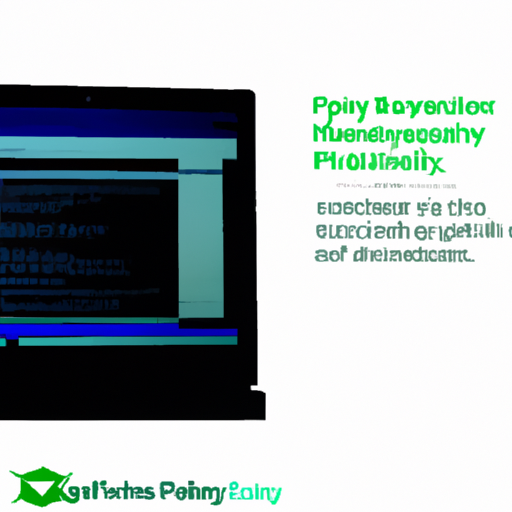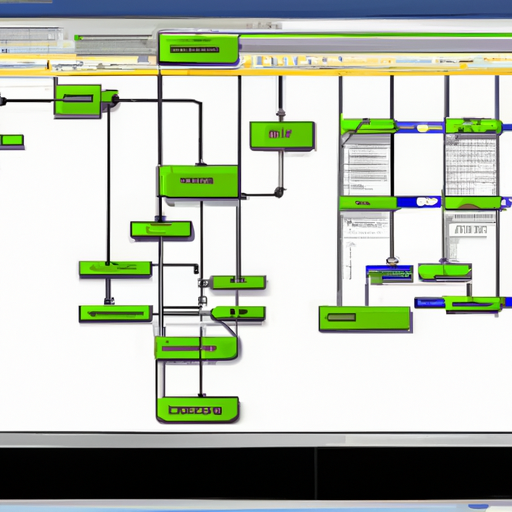What’s The Significance Of Security Orchestration And Automation?
In today’s interconnected world, where cyber threats continue to evolve and multiply, businesses and organizations are constantly faced with the challenge of protecting their valuable data and systems. That’s where security orchestration and automation come into play. By combining the power of advanced technology and smart workflows, security orchestration and automation enable organizations to streamline their security processes, effectively respond to threats, and enhance overall cyber resilience. In this article, we will explore the growing significance of security orchestration and automation and how they are revolutionizing the way we approach cybersecurity. So, fasten your seatbelts and get ready to unlock the secrets behind this game-changing technology.
Improved threat detection and response
Increased efficiency in detecting threats
With the adoption of security orchestration and automation, you can significantly improve your ability to detect threats in your environment. By integrating various security tools and systems, you create a comprehensive and unified view of potential security incidents. This holistic approach enables you to identify threats more efficiently and reduces the risk of threats going unnoticed.
Faster incident response and containment
Timely response to security incidents is crucial in minimizing the impact they have on your organization. Security orchestration and automation streamline incident response processes, enabling you to detect, analyze, and remediate security incidents much faster. By automating repetitive tasks, such as data collection and analysis, you free up your security teams to focus on critical tasks, allowing for rapid containment and resolution of security breaches.
Integration of security tools for better detection
Many organizations rely on a multitude of security tools to protect their systems and data. However, managing and coordinating these disparate tools can be challenging and time-consuming. Security orchestration and automation offer a solution by integrating various security tools into a centralized platform. This integration enhances your ability to detect threats by correlating information from different sources and providing a unified view of your security posture.
Streamlined security operations
Centralized management and visibility
Managing security operations can be complex, especially when dealing with multiple tools and systems. Security orchestration and automation provide a centralized management platform through which you can oversee all security operations. This centralized approach improves visibility and allows for better coordination between different teams and departments involved in security incident response.
Automation of repetitive tasks
Security operations often involve performing repetitive and mundane tasks, such as log analysis and incident triaging. These tasks not only consume valuable time but are also prone to human error. By automating these tasks using security orchestration and automation, you can free up your team from monotonous work and reduce the risk of mistakes. Automation ensures consistent and accurate execution of routine tasks, enabling your team to focus on more critical aspects of security management.
Reduced human errors in security operations
Human errors are inevitable in any manual process, and the same applies to security operations. However, even a small mistake can have severe consequences, leaving your organization vulnerable to attacks. With security orchestration and automation, you can minimize human errors by automating repetitive tasks and standardizing processes. By eliminating the risk of manual mistakes, you can significantly enhance your overall security posture.
Enhanced collaboration and communication
Improved coordination between security teams
Effective collaboration and coordination between different security teams are crucial for a robust security posture. Security orchestration and automation facilitate improved coordination by providing a centralized platform where teams can collaborate, share information, and work together seamlessly. By breaking down silos and ensuring that the right information reaches the right teams at the right time, you can enhance your organization’s ability to respond to security incidents efficiently.
Efficient communication during security incidents
During a security incident, clear and timely communication is vital to minimize its impact. Security orchestration and automation enable efficient communication within security teams by providing real-time updates, alerts, and notifications. By ensuring that relevant information is promptly communicated to all stakeholders, you can facilitate quick decision-making and faster incident response, ultimately reducing the potential damage caused by security breaches.
Effective sharing of threat intelligence
Threat intelligence plays a critical role in identifying, preventing, and mitigating security threats. Security orchestration and automation platforms allow for effective sharing of threat intelligence across different teams and tools. By centralizing threat intelligence and making it easily accessible to all security stakeholders, you can improve your organization’s ability to proactively detect and respond to emerging threats. Additionally, by sharing threat intelligence with external partners and the broader cybersecurity community, you contribute to a collective defense against cyber threats.
Scalability and flexibility
Support for growing security needs
As your organization grows, so do your security needs. With security orchestration and automation, you can ensure that your security operations can scale alongside your organization. By providing a flexible and scalable platform, you can effortlessly add new security tools, systems, and processes as your requirements evolve. This scalability empowers your organization to adapt to changing threat landscapes and meet the growing demand for robust cybersecurity measures.
Adaptability to evolving threats
Cyber threats are constantly evolving, and your security measures must keep pace with these changes. Security orchestration and automation enable you to proactively address emerging threats by adopting agile detection and response mechanisms. By leveraging automation and real-time threat intelligence, you can identify and respond to new threats before they escalate and cause significant harm to your organization.
Ability to handle complex security processes
Modern cybersecurity requires handling complex processes such as incident response, threat hunting, and security operations management. With security orchestration and automation, you can streamline these processes and achieve greater efficiency. By automating workflows, decision-making, and data analysis, you can simplify complex security processes, making them more manageable and less prone to errors.
Cost-effectiveness
Reduction in manual labor costs
Manual security operations can be labor-intensive, requiring significant time and resources. By implementing security orchestration and automation, you can reduce your reliance on manual labor and optimize your workforce. Automation eliminates the need for repetitive and low-value tasks, allowing your security teams to focus on higher-level strategic initiatives. This reduction in manual labor costs translates into cost savings for your organization.
Optimization of security resources
Optimizing your security resources is essential for maximizing their effectiveness. Security orchestration and automation platforms enable you to utilize your existing security tools and systems more efficiently. By integrating these tools and orchestrating their workflows, you can extract the maximum value from your investments. This optimization ensures that your security resources are properly utilized, minimizing unnecessary expenses and enhancing your return on investment (ROI).
Improved ROI on security investments
Every organization invests in various security solutions to protect their assets. However, the effectiveness of these investments can vary based on how well they are orchestrated and integrated into your security operations. Security orchestration and automation ensure that your security investments are fully utilized, integrated, and coordinated. By improving the efficiency and effectiveness of your security solutions, you can achieve a higher ROI, ultimately driving better protection for your organization.
Compliance and regulatory requirements
Automated compliance checks and audits
Compliance with industry standards and regulatory requirements is essential for any organization. Security orchestration and automation can simplify compliance by automating routine checks and audits. By defining and implementing preconfigured workflows, you can ensure that compliance checks are systematically conducted, reducing the risk of non-compliance and potential penalties. Automated compliance also allows your organization to maintain a continuous and up-to-date state of compliance.
Consistent adherence to security policies
Maintaining consistent adherence to security policies across your organization can be challenging, especially with a large workforce and multiple systems. Security orchestration and automation provide a centralized platform to enforce security policies consistently. By automating policy enforcement and monitoring, you can ensure that security policies are followed at all times, reducing the risk of policy violations and strengthening your overall security posture.
Faster response to regulatory requests
Regulatory audits and inquiries often require timely and accurate responses. Security orchestration and automation enable you to respond faster to regulatory requests by automating the collection and organization of relevant data. Rather than spending valuable time manually gathering information, you can leverage automation to retrieve the required data and generate comprehensive reports. This streamlined process saves time and allows you to meet regulatory requirements more efficiently.
Integration with existing security infrastructure
Compatibility with various security tools
Organizations often rely on a diverse range of security tools from different vendors. Security orchestration and automation platforms are designed to be compatible with various security tools, allowing for seamless integration. By integrating different tools, you can create a unified security ecosystem that leverages the strengths of each tool and provides a holistic view of your security landscape. This compatibility ensures that your existing investments in security solutions are not wasted and can continue to be utilized effectively.
Seamless integration with SIEM and other platforms
Security Information and Event Management (SIEM) platforms serve as the central hub for collecting and correlating security event data. Security orchestration and automation can seamlessly integrate with SIEM platforms, enhancing their capabilities. By integrating with SIEM and other security platforms, you can automate the response to security events, streamline incident management, and improve the overall efficiency of your security operations.
Leveraging existing investments in security solutions
Organizations often have investments in various security solutions, ranging from antivirus software to intrusion detection systems. Rather than replacing these investments, security orchestration and automation allows you to leverage them by integrating and orchestrating their capabilities. By connecting and coordinating these existing solutions, you can enhance their effectiveness and ensure they work together harmoniously, maximizing the value of your initial investments.
Proactive threat hunting
Automation of threat intelligence gathering
Threat hunting involves actively searching for potential threats within your environment. Security orchestration and automation enable proactive threat hunting by automating the gathering and analysis of threat intelligence. By aggregating and correlating data from various sources, you can identify potential threats and vulnerabilities before they escalate into full-blown security incidents. This proactive approach enhances your ability to detect and respond to emerging threats promptly.
Real-time monitoring and analysis of security events
Real-time monitoring is essential for effective threat detection and response. Security orchestration and automation platforms provide real-time monitoring capabilities, allowing you to track security events as they occur. By continuously analyzing security events in real-time, you can detect anomalous behavior and potential indicators of compromise. With automated analysis and correlation of security events, you can promptly identify and prioritize the threats that require immediate attention.
Identification of potential threats before they escalate
Security incidents can have a significant impact on your organization if left undetected or neglected. Security orchestration and automation enable the early identification of potential threats, giving you the opportunity to intervene before they escalate. By leveraging automation and threat intelligence, you can detect and respond to threats at an early stage, minimizing their impact and reducing the likelihood of successful attacks.
Reduction in mean time to resolution (MTTR)
Faster incident response and resolution
Mean Time to Resolution (MTTR) measures the time it takes to resolve security incidents. With security orchestration and automation, you can significantly reduce the MTTR by automating incident response and resolution processes. By automating repetitive tasks, such as data collection and analysis, you can expedite incident response, allowing your security teams to focus on critical tasks. This faster response and resolution minimize the damage caused by security incidents and enable your organization to recover quickly.
Automated remediation of security incidents
Remediating security incidents can be a complex and time-consuming process. Security orchestration and automation streamline incident remediation by automating workflows and response actions. By defining predefined response playbooks, you can automate the step-by-step processes required to contain and remediate security incidents. This automation ensures that incidents are addressed promptly and consistently, minimizing the impact on your organization.
Minimization of business impact from security breaches
Security breaches can have far-reaching consequences for your organization, ranging from financial losses to reputational damage. By reducing the MTTR through security orchestration and automation, you minimize the potential impact of security breaches on your business. The faster response and resolution enable you to contain incidents before they can cause severe damage, safeguarding your organization’s operations, reputation, and customer trust.
Improved incident management and reporting
Centralized incident tracking and reporting
Tracking and reporting on security incidents are essential for understanding the threat landscape and improving incident response processes. Security orchestration and automation provide a centralized incident tracking and reporting platform. By consolidating incident data from different sources, you can gain a comprehensive view of your security incidents, allowing you to analyze trends, identify recurring patterns, and make informed decisions to strengthen your security posture.
Standardized incident response processes
Consistency and standardization are crucial in incident response processes. Security orchestration and automation platforms allow you to define and enforce standardized response playbooks for different types of security incidents. By ensuring that incidents are handled consistently and following predefined best practices, you can improve the effectiveness and efficiency of your incident response. Standardization eliminates the ambiguity and variability often associated with manual incident response processes.
Effective incident communication and learning
Communication plays a vital role in incident management. Security orchestration and automation platforms facilitate effective incident communication by providing predefined incident communication workflows. These workflows ensure that all stakeholders are promptly informed about security incidents, their impact, and the progress of incident resolution. Additionally, by centralizing incident data and analysis, your organization can capture valuable insights and lessons learned, improving future incident response and driving continuous improvement in your security operations.
In conclusion, security orchestration and automation deliver numerous benefits across various facets of cybersecurity operations. From improving threat detection and incident response efficiency to enhancing collaboration and communication, these technologies enable organizations to streamline their security operations and better protect their systems and data. By embracing security orchestration and automation, organizations can proactively address evolving threats, optimize their security resources, and achieve cost-effectiveness while complying with regulatory requirements. The integration with existing security infrastructure and the automation of threat intelligence gathering facilitate proactive threat hunting, ultimately reducing the mean time to resolution of security incidents. Moreover, security orchestration and automation improve incident management and reporting, driving timely and effective communication while enabling organizations to learn and improve from past incidents. With this comprehensive transformation, organizations can enhance their overall security posture and stay resilient in the face of ever-evolving cyber threats.








